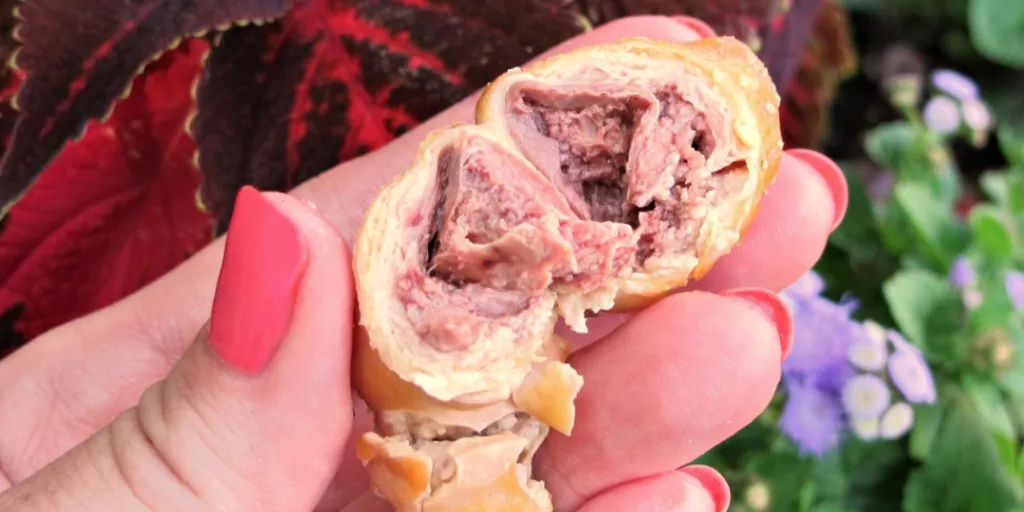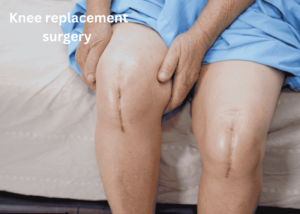Understanding the Mystery of the Lash Egg
let’s talk about something pretty strange and honestly, a bit alarming, that can happen when you keep backyard chickens. I...

let’s talk about something pretty strange and honestly, a bit alarming, that can happen when you keep backyard chickens. I remember the first time I saw one. It wasn’t an egg, not really. It was lumpy, misshapen, maybe rubbery or hard in spots, and just… wrong. Someone in my online chicken group called it a “lash egg.” I had no idea what that meant, but I quickly learned it’s a serious sign something’s not right inside my hen. Let me dig into what a lash egg actually is, why it happens, and what you really need to do about it. Trust me, this isn’t something to ignore.
What Exactly Is a Lash Egg?
First off, that name “lash egg” is kind of misleading. What you’re looking at isn’t an egg at all. Think of it more like a biological SOS signal from your hen. A lash egg is actually a mass of pus, inflamed tissue, coagulated egg material, and sometimes bits of yolk or white, all glued together. It’s the hen’s body trying desperately to expel an infection raging in her oviduct – that’s the tube where a normal egg gets its shell. Learn more by reading this Facebook Report.
Imagine the oviduct is like a long, soft balloon. Now, picture that balloon getting infected and inflamed. The body sends immune cells (pus) to fight the infection. As this battle happens, debris builds up – dead cells, inflammatory gunk, maybe even bits of broken-down yolk or white from an egg that got stuck or messed up. This whole mess gets pushed down the oviduct and comes out the vent. It often looks bizarre: sometimes roundish but lumpy, sometimes long and tubular, sometimes like weirdly shaped cheese.
Why Does This Happen? The Usual Suspect: Salpingitis
Almost always, finding a lash egg points directly to a nasty infection called salpingitis. This is basically an infection and inflammation of the oviduct itself. It’s the root cause behind the scary mass your hen passed. Think of salpingitis as the disease, and the lash egg as the very visible, yucky symptom.
So, how does a hen get salpingitis in the first place? Bacteria are the main culprits. Common ones include E. coli (yes, the kind often associated with food poisoning, but different strains live normally in the gut), Mycoplasma gallisepticum (a cause of chronic respiratory disease) etc. These bacteria don’t belong in the oviduct. How do they get there?
- Ascending Infection: This is the most common route. Bacteria from the hen’s vent or cloaca (the multi-purpose exit chute) travel upwards into the oviduct. This can happen more easily if the hen is stressed, her immune system is down, or if she has another infection like a respiratory one that weakens her defenses. Sometimes, straining to lay a very large egg or an egg that breaks inside can create an opening for bacteria.
- Descending Infection: Less common, but bacteria can sometimes travel down from an infection higher up in the body, like in the abdomen (peritonitis) or even from the ovaries, reaching the oviduct.
- Hematogenous Spread: In rare cases, bacteria circulating in the bloodstream (septicemia) can settle in the oviduct and cause infection.
Read More : Beyond the Surface: Deep Cleaning Tips for a Healthier workspace
Why Finding a Lash Egg is a Big Red Flag
Here’s the crucial part: Passing a lash egg means your hen is seriously ill. It’s not just a weird one-off occurrence. Salpingitis is painful and debilitating. Think about how awful a severe internal infection feels for us; it’s the same for them. By the time a lash egg is expelled, the infection has usually been brewing for a while. The hen is likely suffering from:
- Pain: Straining, discomfort, lethargy.
- Reduced Appetite: She won’t feel like eating much.
- Weight Loss: Due to not eating and the body fighting infection.
- Depression/Lethargy: She’ll be hunched, fluffed up, sleepy, and withdrawn from the flock.
- Abnormal Droppings: Diarrhea or strange colors are possible.
- Labored Breathing: If the infection is severe or spread.
- Pale Comb/Wattles: Indicating anemia or poor circulation.
Left untreated, salpingitis is often fatal. The infection can spread to the abdomen (causing peritonitis) or into the bloodstream (septicemia), leading to death. Even if the hen survives the initial crisis, the damage to the oviduct is often permanent. Scar tissue forms, making future egg laying difficult, painful, or impossible, and significantly increasing the risk of recurring infections and future lash eggs.
What Should You Do If You Find a Lash Egg?
- Isolate the Hen Immediately: This is step one. Gently remove her from the flock and place her in a quiet, warm, clean, and comfortable sick bay (a large dog crate or separate pen works well). This reduces stress, prevents bullying from other chickens, and allows you to monitor her closely. Stress significantly weakens their immune system, making the infection worse.
- Do NOT Squeeze or Probe: Never try to “help” by squeezing her abdomen or probing her vent. You could cause severe internal damage.
- Assess Her Condition: Look at her closely. Is she alert? Is she eating and drinking? Is she passing normal droppings? How’s her breathing? Take her temperature if you feel comfortable doing so (normal chicken temp is around 105-107°F / 40.5-41.7°C – a fever is a bad sign). This information is vital for the vet.
- Call Your Avian Veterinarian ASAP: This is non-negotiable. Finding a lash egg is a veterinary emergency. Explain exactly what you found and describe the hen’s symptoms. Time is critical. Don’t wait to see if she “gets better” – she likely won’t without proper treatment.
What Will the Vet Do?
The vet needs to determine the severity of the infection and the best course of action. This usually involves:
Blood Work: To evaluate current infection (high white blood cell count), anemia and bodily functions.
X-rays (Radiographs): X-rays are used to search masses, retained egg material, fluid around the abdomen (indicating EYP) or other irregularities.
Ultrasound: In order to have a closer view of the oviduct and abdominal organs.
Lash Egg Mass: At times, they may observe it using the microscope or culture to determine which type of bacteria is causing the infection (this is done to select the proper antibiotic).
Treatment (Depend on severity and the value of the Hen)
Vigorous Antibiotics: The course of specific antibiotics is needed to combat the bacterial infection: it should be long (7-14 days and more) and usually injected or presented perorally. Anti-inflammatory medicine and pain reliever are also significant.
Supportive Care: Hydration (so she does not become dehydrated), parenteral nutrition (such as critical care formula in case she is not consuming anything) and probiotics (to help her gut health due to the use of antibiotics) and being kept warm and comfortable.
Surgery (Salpingectomy): Surgery is done by removal of the infected oviduct. It is a big, costly surgery with great risk but it is sometimes the only alternative to save the life of a hen and this is in the case of infection is severe, persistent, or in case of the presence of a tumor. Notably, this surgery will mean that the hen will not be able to lay eggs, and otherwise, she can live a healthy and normal life. Such a decision is closely related to what kind of shape the hen is qua, her worth (prized pet or working hen), and economics.
Humane Euthanasia: In later stages where there is no hope of treatment and where treatment does not show improvement or the pain of the hen is unbearable, euthanasia will be the best solution. It is an awkward choice but at times, it is necessary.
Is Prevention of Lash Eggs Possible? Stopping Salpingitis)
Though you can never certainly be able to prevent it, you can significantly minimize the risk, by emphasizing on excellent management and low-stress:
Impeccable Coop Hygiene: This is paramount. Clean the coop regularly! Remove droppings daily. Do heavy cleanings once a week or every other week and scrub surfaces with a product safe on poultry. Bedding should be changed regularly; it should be dry. The respiratory tracts of chickens are irritated by the accumulation of ammonia using wet litter that weakens the chickens making them more vulnerable to infections that may result in salpingitis. The best way of minimizing moisture and ammonia is good ventilation.
Nesting Boxes: Use to make sure that there are plenty of clean, dry nesting boxes and they should have fresh bedding (such as straw or wood shavings). Take eggs, daily, at least, twice a day. Unclean nests harbor the bacteria which may easily get into the vent of the hen.
Stress Reduction: Stress adds more susceptibility to illness in the chicken. Spread them out (overcrowding is a key stress factor), keep them out of reach of predators (secure coops/runs), be careful about the routine not changing, and carefully introduce new birds and quarantine until they are checked over by a vet. Avoid intensive loud sounds and disturbances around the coop.
Balanced Nutrition: The only food they should be fed should be a high quality, age appropriate layer feed. This gives all the necessary vitamins and minerals to have a powerful immune system and stimulates healthy reproduction. There should be enough treats, or kitchen scraps and they will unbalance their nutrition.
Biosecurity: Quarantine new birds for at least 30 days before introducing them to your flock. This helps prevent bringing in diseases like Mycoplasma. Limit visitors to your coop/run, and have dedicated footwear for tending your flock. Disinfect equipment used for sick birds.
Observe Your Flock Daily: Know what “normal” looks like for each hen. Watch for early signs of illness: changes in eating/drinking, activity level, droppings, comb color, posture, or breathing. Catching any illness early gives you a much better chance of successful treatment. Pay attention to egg production changes too.
Consider Breed & Age: Some breeds are more prone to reproductive issues. Also, as hens age (especially beyond 2-3 years), their risk of salpingitis and other reproductive problems increases. Be extra vigilant with older hens.
Wrapping It Up
Finding a lash egg is undeniably scary and upsetting. That weird, lumpy mass is a stark signal that your hen is fighting a tough internal battle. Understanding that it’s a sign of salpingitis, a severe infection, highlights why immediate action is non-negotiable. Getting her to a vet quickly gives her the only real fighting chance. While treatment is intensive and success isn’t guaranteed, it’s her best hope.
Going forward, the experience really hammers home how vital prevention is. Keeping that coop spotless, ensuring nests are clean and dry, minimizing stress, and feeding top-notch food aren’t just chores; they’re the frontline defenses protecting your hens from this painful condition. Watching your flock closely every single day means you might catch subtle signs of illness long before it escalates to something as drastic as a lash egg. It’s a tough part of chicken keeping, but being informed, prepared, and ready to act fast makes all the difference for the well-being of your feathered friends.







